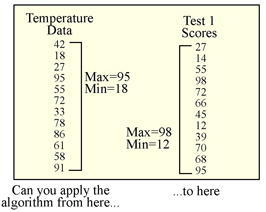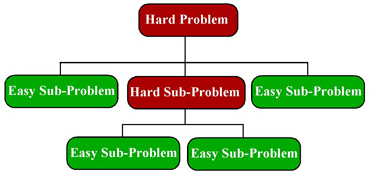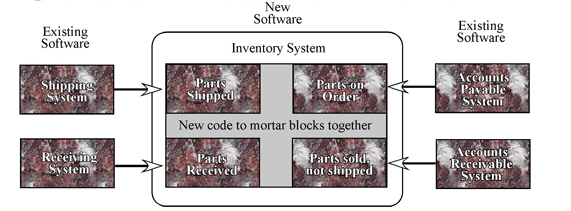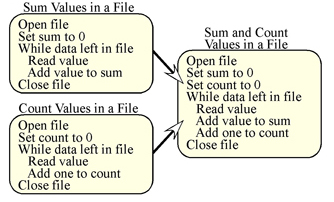
- What data do I have to work with?
- Where is that data coming from?
- What is the format of that data?
- How much data is there?
- How will I access the data?
- How will I know when I have all the data?
- What processing must I do on the data?
- What should the output look like?
- How many times will I have to repeat the processing?
- What special error conditions should I expect?
- How will I handle those special error conditions?
As you get more experience designing software solutions to problems you will began to see similar situations. Ask yourself, how can I apply previous solutions to problems, that I developed, to this problem?

Too many programmers, when they are trying to solve a problem, get all wrapped around the axel trying to come up with a computer-oriented solution. Learn to think outside the computer box. How would you solve the problem if you didnít have a computer. Can that solution then be adapted to a computer solution? One common type of programming problem you may have at some time in the future is what is called Modeling and Simulation in which you have to write a program to simulate some real life situation or event.

Frequently in a problem solving situation you are told what your beginning state is, i.e. What is the form of the data and where is it. And you are told what your ending state is, i.e. What form must the data be in after processing and where must it be stored. Now it is up to you to decide how to get from the starting state to the ending state. And there may be many different ways to get there.

This is probably one of the most important approaches. Frequently (especially in future courses) you will get programming assignments that may seem overwhelming. Just remember the problem: "How do you eat an elephant?" The answer is: One bite at a time. Break the large problem down into smaller pieces and find a solution to each piece of the problem. Then put all the pieces together.

This is similar to Divide and Couquer. Look to see if there are already some solutions that might solve parts of your problem. Can you assembly these smaller pieces together to arrive at a solution to your problem.

Sometimes you may be able to take two solutions for simple problem and combine them into a larger solution to a bigger problem. For example, as illustrated in the diagram below, you may be able to merge the solutions to counting the number of values and summing a number of values to find the of a set of values average.
